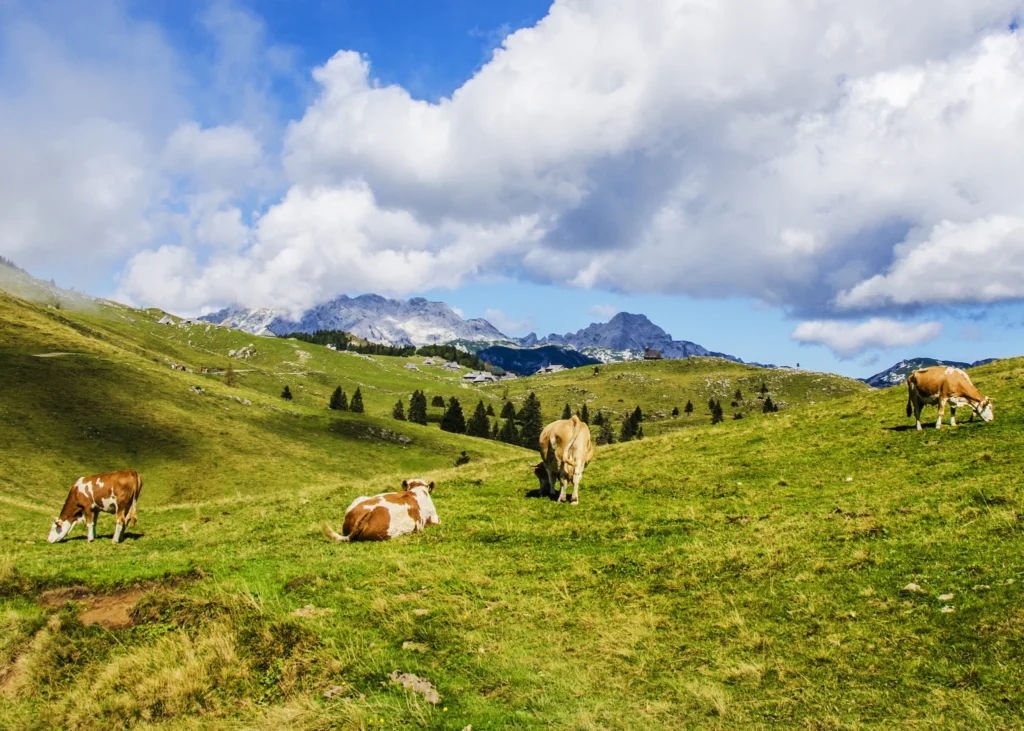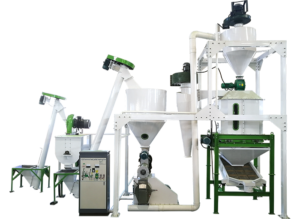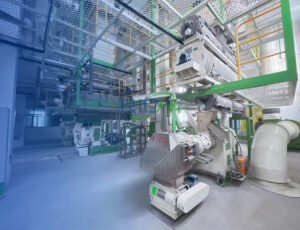
Grass-fed and organic beef have gained significant popularity in recent years, driven by consumer demand for more sustainable, environmentally-friendly, and ethically-produced meat options. Here’s a closer look at grass-fed and organic beef, including their production methods, benefits, and considerations:
Grass-fed Beef: Grass-fed beef comes from cattle that are raised primarily on a diet of grass and forage, rather than grains or concentrated feed. These cattle graze on pasturelands, consuming a natural diet that is rich in nutrients and lower in fat compared to grain-fed counterparts. Grass-fed beef production typically involves rotational grazing practices, where cattle are moved between different paddocks to ensure optimal forage utilization and pasture health.
Benefits of Grass-fed Beef:
- Nutritional Profile: Grass-fed beef tends to be leaner and higher in beneficial nutrients such as omega-3 fatty acids, conjugated linoleic acid (CLA), and antioxidants compared to grain-fed beef.
- Environmental Sustainability: Grass-fed beef production systems are often more environmentally sustainable, as they promote soil health, biodiversity, and carbon sequestration through pasture management practices.
- Animal Welfare: Grass-fed cattle are allowed to exhibit natural behaviors such as grazing and roaming, leading to improved animal welfare compared to confined feedlot systems.
- Flavor and Texture: Many consumers prefer the flavor and texture of grass-fed beef, which is often described as more robust and earthy compared to grain-fed alternatives.
Organic Beef: Organic beef refers to beef that is produced according to strict organic standards, which regulate the use of synthetic pesticides, fertilizers, antibiotics, and hormones in livestock production. Organic beef cattle are raised on certified organic pastures and fed organic feed that is free from genetically modified organisms (GMOs) and synthetic additives. Additionally, organic beef production emphasizes animal welfare, environmental stewardship, and sustainable farming practices.

Benefits of Organic Beef:
- No Synthetic Inputs: Organic beef production prohibits the use of synthetic pesticides, fertilizers, antibiotics, and hormones, reducing chemical exposure for consumers and minimizing environmental pollution.
- Animal Welfare: Organic standards mandate humane treatment of livestock, including access to outdoor pasture, clean water, and space to exhibit natural behaviors.
- Environmental Protection: Organic farming practices prioritize soil health, biodiversity, and ecological balance, contributing to the conservation of natural resources and reduction of greenhouse gas emissions.
- Consumer Confidence: Organic certification provides consumers with assurance that beef products have been produced according to rigorous organic standards, ensuring transparency and integrity in the food supply chain.
Considerations: While grass-fed and organic beef offer numerous benefits, there are some considerations to keep in mind:
- Price: Grass-fed and organic beef typically command higher prices compared to conventionally produced beef due to the cost of production and certification requirements.
- Availability: Grass-fed and organic beef may not be as readily available as conventionally produced beef in all markets, depending on factors such as location and consumer demand.
- Taste Preference: While many consumers enjoy the flavor and texture of grass-fed and organic beef, personal taste preferences may vary.
In conclusion, grass-fed and organic beef offer consumers a range of nutritional, environmental, and ethical benefits. By choosing grass-fed or organic options, consumers can support more sustainable and humane farming practices while enjoying high-quality beef products that prioritize health, flavor, and environmental stewardship.
FAQ:
What is grass-fed beef ?
It all comes down to what the cattle eat. 100% grass-fed beef comes from cattle that eat a diet of only grass and other plant forages — the food they’re evolved to eat. As ruminants, cattle are happiest and healthiest when they eat grass, and the meat ends up being healthier (and tastier, we think) as a result.
Most conventional beef, what you usually find on the shelf, is grain-finished; cattle are given a diet of corn or grain to quickly and dramatically fatten them up. This feeding often takes place in feedlots vs. pasture.What is grass-finished beef? What is the difference between grass-fed and grass-finished?
Grass-finished beef means 100% grass-fed beef; that is, the cattle have eaten only grass for their entire life. All cattle technically start off as grass-fed, but most are finished on grain or corn. The USDA doesn’t have a standard requirement for what is labeled “grass-fed.” So if you’re looking for truly grass-fed beef, look for “100% grass-fed” or “grass-finished” stated on the package.
What is free range beef?
If you care about animal welfare and humanely-raised meat, pay attention to this label. Free range beef, or pasture-raised beef, means cattle are free to roam and graze on open fields, the way nature intended. Free range cattle are NEVER confined to feedlots.
Important to note, even 100% grass-fed beef is not necessarily free range, and vice versa. Cattle can still be fed grass-pellets (!) in feedlots and be called 100% grass-fed. Conversely, cattle may live on pasture their whole lives but be fed corn or grain.What is feedlot?
Sad topic alert. Feedlots are also known as Confined Animal Feeding Operations (CAFOs). Here, cattle are packed in together in unnatural, stressful, and often unsanitary quarters to be “finished” or fattened up for harvest.
They are fed corn, grain, by-products, even candy (seriously) to up their weight as quickly and cheaply as possible. This typically last months, and can last as long as ⅓ of the animal’s total lifespan.What is organic beef?
The organic seal ups the ante on cleaner inputs, environmental impact, and animal welfare. For beef to get the organic seal, cattle must be raised on certified organic land and fed certified organic feed — that means no synthetic pesticides, fertilizers, or GMOS involved. Cattle cannot receive any antibiotics or added growth hormones. Farms have to meet guidelines for sustainability and are certified through third parties.
Is all organic beef grass-fed? They’re the same, right?
Nope! Organic, grass-fed, and free range are not synonymous. Beef can be organic without being 100% grass-fed; it can be 100% grass-fed without being organic; and it can also be 100% grass-fed and organic without being free range.
For beef to be organic, cattle can only eat organic feed… but that doesn’t mean it has to be grass. Corn and grain can also be organic. Similarly, cattle can be on pasture eating grass for the entirety of their lives, but those farms might not use organic methods.
We know, it’s exhausting. So, if the issues of environment, animal welfare, and your own health are of equal importance — look for the organic seal, 100% grass-fed, and free range on your beef label.Is grass-fed beef better for you?
You bet. When cattle eat their natural diet of grass, the beef is functionally different. Compared to conventional beef, grass-fed beef is leaner, lower in calories, and higher in vitamins and nutrients. Higher in Omega-3s and CLA, beta carotene, Vitamin E, B vitamins, the list goes on.
Does grass-fed beef taste different?
If you’re used to eating conventional beef, you might notice that grass-fed beef tastes different than conventional, grain-fed beef. A diet of only grass vs. grain or corn often results in a “true beef” flavor. Grass-fed beef tastes the way beef should!






